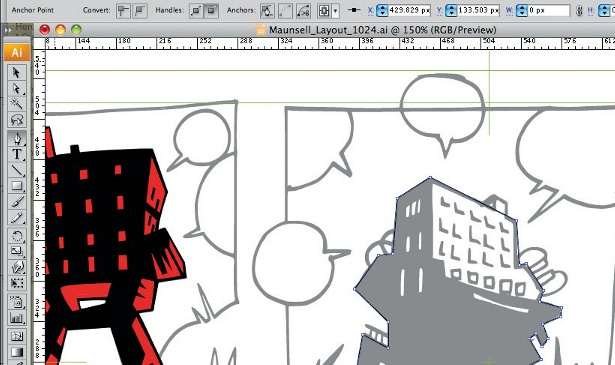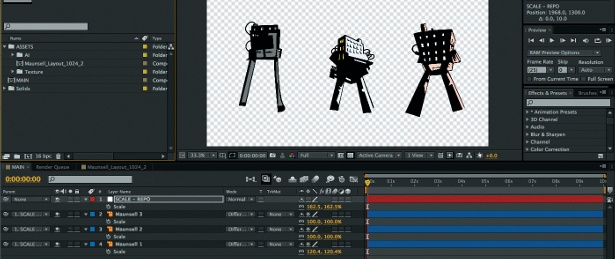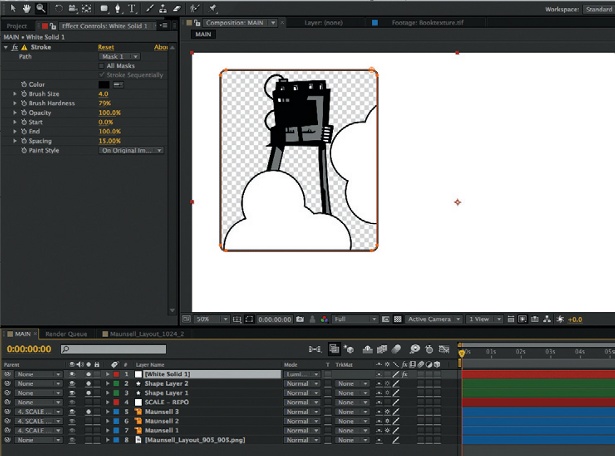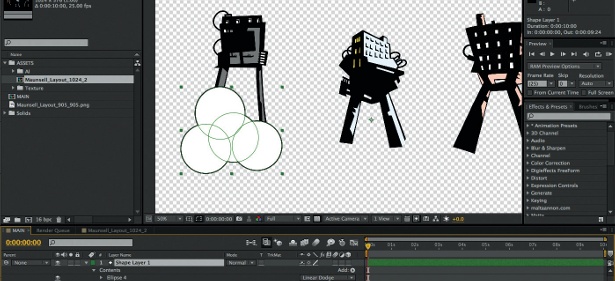Personalise your site for each visitor
Making it easier for users to find relevant content through personalisation and recommendation technology will help improve their experience, says James Doman
This article first appeared in issue 225 of .net magazine – the world's best-selling magazine for web designers and developers.
Every day, massive amounts of content is created and shared. This mass creation presents one big problem: how can we help users find relevant content easily?
For this reason, personalisation is fast becoming the most-talked about web technology of 2012.
While industry behemoths such as Amazon, Facebook and Google are using personalisation to secretly skew our online lives, anyone can now access the same advanced, powerful and flexible technology to plug into new and existing sites, platforms, apps and services to create relevant user experiences and guide content discovery. In this article, we’ll look at some of the factors to think about when creating content-driven sites with personalisation and recommendation technology, from how to design for dynamic content, technical considerations to keep in mind and some of the different types of algorithms and filters that make the logic that drives personalisation.
But first, what do we mean when we talk about personalisation?
Personalisation is best explained as a mix of on-site behavioural tracking, predictive algorithms, and on-site content and experience adaption.
Unlike behavioural targeting, behavioural data isn’t sold to companies to target adverts and users aren’t tracked around the web, nor is personalisation a form of behavioural retargeting that aims to increase conversions by bringing browsers back to purchase.

Personalisation/recommendation engines can use both explicit information (things such as dates of birth, gender and location that we consciously share with sites) and implicit signals (subconscious signals, such as the specific attributes of the content we look at and the level of engagement we have with a piece of content). Unique user profiles are created and are continuously updated, learning and adapting with the user’s interests and tastes. On a clothing retail site, for example, personalisation technology can understand that a user is a man who wears medium-size clothes and prefers the colour blue, and then adapt the store around this information.
Understand the user
Designing sites with personalised content and relevant recommendations doesn’t just mean putting a block in a sidebar or on the homepage. “It’s important to understand what the user is trying to achieve,” says Ali Carmichael, director of UX design agency Experience Solutions. “By understanding this, we can establish the critical content the user needs to complete their goal, and therefore provide personalisation at points in their journey useful to the user”.
Personalisation technology isn’t the magical answer to poor navigation – it’s one of the many tools needed to aid successful content discovery. “We often see sites trying to promote other content too early in the user journey, which ultimately results in the user ignoring the content and possibly leaving,” says Carmichael. “If a user is trying to find information about a specific Xbox game, let them find the game as a priority. Once the user has found the information they’re looking for, they are more likely to be open to inspiration.”
The Locked Loop
Ensuring great navigation also helps users escape what we call the ‘Locked Loop’. The theory began after discussing The Filter Bubble, a book by Eli Pariser that raises ethical questions about how we let media companies such as Facebook and Google control our news intake, which then shapes our view of the world. We came to the conclusion that the ‘filter bubble’ is not quite as extreme for content-driven sites, but the Locked Loop is.
Personalisation, especially in ecommerce, can be used to target visitors by extremely granular detail, which can adapt the whole site based on a visitor profile. If a site has poor navigation, users might never escape their profiled identity, locking them in to an infinite loop of the same suggestions.
Imagine a mother looking for a birthday present for her three-year-old son, and two months later she returns to look at Christmas presents for her slightly older daughter. From the moment she’s back on site she might be hounded with Action Man dolls, scooters and bikes – it might be impossible to find the Barbie doll she was looking for if the site navigation isn’t up to scratch with poor, disorganised navigation and a sub-standard search feature.

It’s also an algorithmic problem – the system has to be able to learn and adapt to visitor behaviour in real time: it needs to recognise new declarations of interest and switch algorithms accordingly. Providing enough discovery mechanisms for your users to escape the Loop and find new, relevant, interesting and fresh content will increase the scope of their profile, and produce more relevant suggestions.
Sorting cues
The initial considerations for personalisation don’t just stop at the wireframes. It’s time to get psychological – take some time to think about your sorting cues. These are the seemingly random block titles that point out relevant and personalised content such as “You may like”, “We think you might be interested in” or even just “Recommended for you”. They all have different effects on suggestion click-through performance, and it’s worth split-testing different sorting cues to see which one is most successful with your visitors.
Get the Creative Bloq Newsletter
Daily design news, reviews, how-tos and more, as picked by the editors.
Technical considerations
The big question is, do you build or buy personalisation technology? There are several free open source algorithms, for example Apache Mahout and Google’s Prediction API, but they're simplistic and add little value.
There are a lot of different commercial choices from a range of different vendors – from niche vertical suggestion engines to fully featured personalisation platforms, all in different shapes and sizes and catering to different business models.
There are three big points to think about: integration methods; how the vendor manages content; and performance and security. These are the basic things you should consider, as they can have a direct impact on your site’s success.

Integration and learning
First, all integration technologies will vary. All vendors should have an accessible API that you can plug into, while some may have deeply integrated plug-ins or extensions for specific platforms, and Take some time to think about your sorting cues, such as “You may like” or “We think you might be interested in” some might use JavaScript to display content, which is also the best option if you’re using full page caching.
JavaScript systems might not be best for providing relevant suggestions as they are usually quite simplistic without providing a datafeed or similar. There are benefits and drawbacks to each integration method, so see which fits best with your goals.
Another question to ask is how vendors learn and find content. Datafeed methods will require an initial setup and, unless set to run five or six times a day, could mean you are promoting unavailable content, whereas auto-discovery methods are cleaner and transmit content details every time a piece of content is viewed.
Performance and support
The performance and security of third-party software is crucial. Each personalisation system will be built and supported differently: some will run in the cloud, others on hosted servers. Look for vendors with great standard service level agreements (the best available is 99.95 per cent) and ask them to explain their failover support, release cycles and high-level architecture.
It’s also worth looking at the support available too, as this can also be a deciding factor. Some companies have support teams in the UK, and most are in the US, and some outsource their support to Eastern Europe – there are lots of different business and support models, and there will be one that best suits your needs.

The logic
Algorithms and filters are the backbone of a personalisation/recommendation system. Some vendors are sticking with trusted “crowd-wisdom” algorithms in the guise of a “black box” recommendation system, while others are exploring predictive and intent-based algorithms with open, transparent and configurable frameworks – it really depends on how involved you want to get, and how targeted you want your logic to be.
In the beginning, algorithms for recommendation engines looked at “users” and “items” to create meaningful relationships between content and visitors. Then “events” were slipped in, allowing engines to look at relationships between behaviour, content and visitors.
These high-level concepts have stuck over the last few years until quite recently, when companies began to look back at the basics to understand what the content is and who the visitors are. There are many different types of algorithms, including:
- Basic collaborative filtering – “people who looked at this also looked at”.
- Profiling – understanding your behaviour.
- Clickstream – watching your behaviour.
- Attribute shadowing – understanding behaviour.
- Entrance analysis – “people who arrived this way looked at”.
- Fuzzy content analysis – “this is a similar game based on what we know about the platform, studio and game designer”.
What most people don’t quite understand is that all of these algorithms need to be in the right context. It wouldn’t be effective to use collaborative filtering on homepages (where profiling would be useful), nor would fuzzy content analysis work on a check-out page (whereas collaborative filtering would).

Some vendors have patented technology to understand visitor contexts and dynamically adapt the algorithms used – some don’t let you have any say at all with “black box” approaches.
It’s also possible to maximise the opportunities available with personalisation through filter sets. It’s possible to set filters to skew presented contents: for example, you may want to skew relevant content by those with the highest costper- click to maximise the opportunity available or test to see if suggesting recent relevant content performs better than all-time relevant content.
Testing is another default feature to look for. You should have the ability to split-test at least two different logic configurations, which helps you to learn what works best for your website.
It’s also useful for proving the return on investment, as it allows you to test 90 per cent of sessions with good, relevant logic, and 10 per cent with unhelpful “Newest Content” or “Most Read”.
Conclusion
Hopefully, this article has helped you to see that personalisation isn’t just another web technology to plug in and forget. For personalisation to be done well, it needs to be driven by an overall understanding of the user.
As Ali Carmichael from Experience Solutions says, “Knowing your users is key. Review your users and their goals, prioritise these in relation to user needs and business objectives and then map the user journeys to include points of relevant personalisation.”
By understanding how users will behave on your site, not only will you learn where to assist users along their journey, but you’ll also understand how to assist their journey. And that’s the big step from designing a site around visitors, to designing a site for people.
Find 30 top examples of Javascript at our sister site, Creative Bloq.

Thank you for reading 5 articles this month* Join now for unlimited access
Enjoy your first month for just £1 / $1 / €1
*Read 5 free articles per month without a subscription

Join now for unlimited access
Try first month for just £1 / $1 / €1
The Creative Bloq team is made up of a group of design fans, and has changed and evolved since Creative Bloq began back in 2012. The current website team consists of eight full-time members of staff: Editor Georgia Coggan, Deputy Editor Rosie Hilder, Ecommerce Editor Beren Neale, Senior News Editor Daniel Piper, Editor, Digital Art and 3D Ian Dean, Tech Reviews Editor Erlingur Einarsson, Ecommerce Writer Beth Nicholls and Staff Writer Natalie Fear, as well as a roster of freelancers from around the world. The ImagineFX magazine team also pitch in, ensuring that content from leading digital art publication ImagineFX is represented on Creative Bloq.
